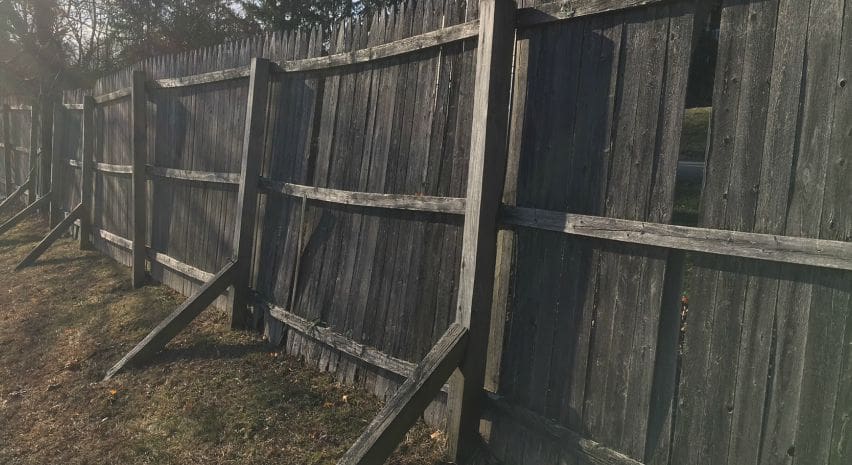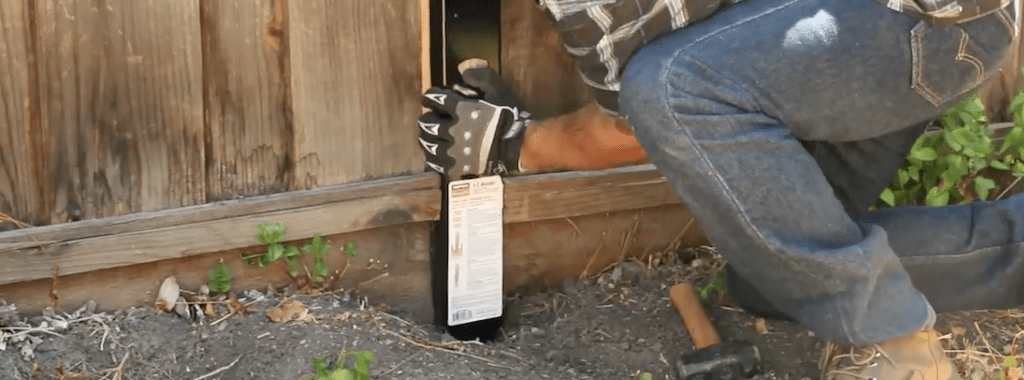Tree Trimming
Master Your Fence Gate: A Step-by-Step Repair Manual


As they say, a strong fence makes for a safe haven. But what happens when your gate is no longer up to par? Fear not, for I am here to guide you through the process of mastering your fence gate repairs.
In this step-by-step manual, we will cover everything from hinge lubrication to latch realignment, sagging correction to reducing wood swelling, and even rust removal.
Get ready to fortify your fence and ensure the utmost safety for your abode.
Hinge Lubrication
I recommend using a lubricant to maintain the hinges of your fence gate. Regular lubrication is crucial for ensuring smooth and proper functioning of the gate. Over time, dirt, dust, and moisture can accumulate on the hinges, causing them to become stiff and difficult to open or close.
By applying a lubricant, you can reduce friction and prevent rust or corrosion from damaging the hinges. Silicone-based lubricants are ideal for fence gate hinges, as they’re resistant to water and provide long-lasting lubrication. To apply the lubricant, simply spray or brush it onto the hinges, making sure to cover all moving parts. Remember to wipe away any excess lubricant to prevent it from attracting dirt or debris.
Regular hinge lubrication will keep your fence gate in optimal condition and ensure safe and easy operation.


Latch Realignment
To ensure proper functionality, it’s essential to regularly check and adjust the latch alignment on your fence gate. A misaligned latch can compromise the security of your gate and potentially allow unauthorized access to your property.
To realign the latch, start by inspecting the latch and the strike plate for any damage or debris. Remove any dirt or debris using a brush or compressed air.
Next, loosen the screws on the strike plate and adjust its position to align with the latch. Tighten the screws securely, ensuring the latch engages smoothly when closing the gate.
Test the latch by opening and closing the gate multiple times to verify its proper alignment.
Regularly inspecting and realigning the latch will help maintain the safety and security of your fence gate.
Sagging Correction
One effective solution for correcting sagging in a fence gate is utilizing a gate brace. A gate brace is a metal bracket that provides additional support to the gate, preventing it from sagging and dragging on the ground.
To install a gate brace, begin by positioning it diagonally across the gate, with one end attached to the bottom corner of the hinge side and the other end attached to the top corner of the latch side. Secure the brace using screws or bolts, making sure it’s tightly fastened.
The gate brace will help distribute the weight of the gate evenly, correcting sagging and improving its overall stability.
Regularly inspect and tighten the brace to ensure ongoing effectiveness and safety.
Wood Swelling Reduction
To reduce wood swelling in a fence gate, I recommend applying a waterproof sealant. This will create a protective barrier that prevents moisture from penetrating the wood, reducing the chances of swelling.
When choosing a sealant, opt for one specifically designed for outdoor use and that’s compatible with the type of wood used in your fence gate.
Before applying the sealant, make sure the wood is clean and dry. Remove any dirt, debris, or previous coatings that may interfere with the adhesion of the sealant.
Apply the sealant evenly, using a brush or roller, and make sure to cover all exposed surfaces of the gate.
Allow the sealant to dry completely before using the gate again.


Regularly inspect and reapply the sealant as needed to maintain its effectiveness.
Rust Removal
Now let’s address the issue of rust removal in your fence gate.
Rust can weaken the structure of your gate and compromise its safety. To remove rust, start by wearing protective gloves and goggles to ensure your safety. Use a wire brush or sandpaper to scrub away the rust from the affected areas. Make sure to remove all loose particles and debris.
Afterward, apply a rust converter or rust inhibitor to prevent further rusting. Allow it to dry completely before applying a coat of rust-resistant paint or primer.
Regular maintenance, including inspections and cleaning, will help prevent rust from forming in the future. Remember, addressing rust promptly will ensure the longevity and safety of your fence gate.


Hello there! I’m Logan Foster, the green-thumbed social media marketer behind the vibrant world of 1800TreeGuy.com. With roots firmly planted in arboriculture, I’ve branched out to help clients cultivate their dream outdoor spaces, one leafy canopy at a time. My knack for nurturing nature is more than a profession—it’s a way of life.
When I’m not talking trees and teaching the art of arboreal care, you can find me cheering on the Bulldogs—my alma mater’s pride and my forever team. My environmental studies there didn’t just teach me about ecosystems; they instilled a lifelong passion for protecting our planet.
Off the clock, I’m an adventurer at heart. Whether it’s trekking the Appalachian trails, pedaling down a mountain path, or crafting guides to share the wonders of the wild, I’m happiest with soil under my nails and the sun on my face. And let’s not forget Yoda, my pug sidekick. He may not have mastered the art of stillness, but his joyful grins are my daily dose of happiness.
I’m all about making connections—between people and the great outdoors and between my clients and their ideal landscape visions. My approach is personal; every tree has a story, and every garden reflects its caretaker.
If you want to green your scene or share in my outdoor escapades, give me a shout on Instagram or Facebook. Let’s cultivate a conversation and grow a community rooted in a love for the lush life.














